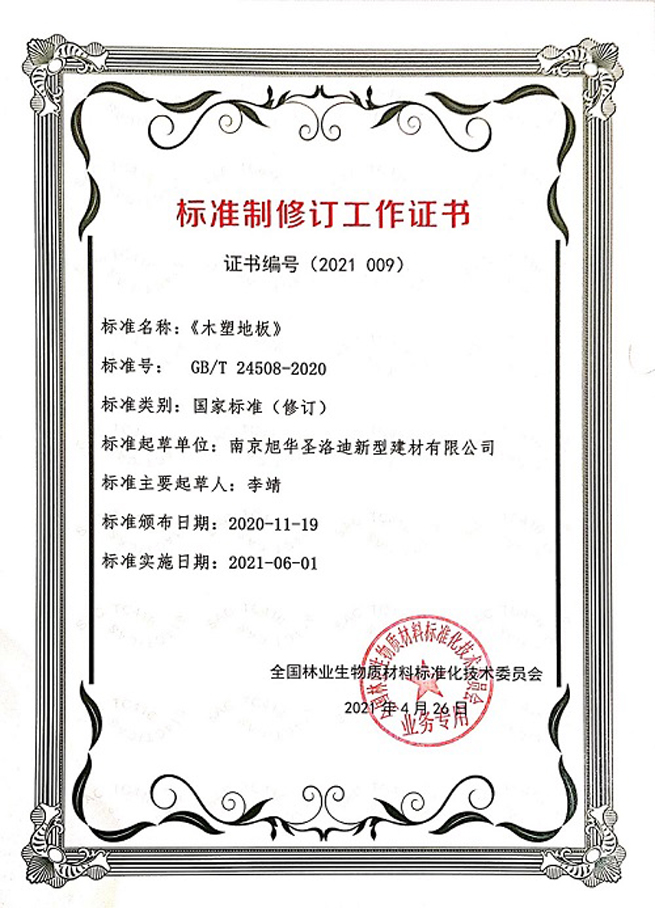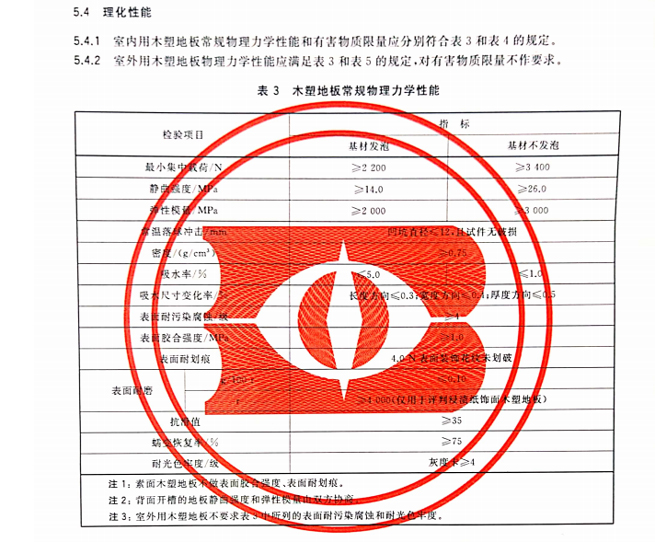The national standard "Wood-Plastic Flooring" GB/T24508-2020, drafted by Nanjing Xuhua Sundi and centralized by the National Forestry and Grassland Administration, will be officially implemented starting from June 1, 2021!

This standard is drafted in accordance with the rules specified in (B/T 1.1-2009).
This standard replaces GB/T 24508-200( Wood-Plastic Flooring). Compared with GB/T 24508-2009, the main technical changes of this standard are as follows:
Revised the definition of wood-plastic flooring (see 3.1 in the 2009 version 3.1);
Revised the classification method of wood-plastic flooring (see Chapter 4 in the 2009 version Chapter 4);
Deleted the classification of product front appearance as excellent and qualified (see 2009 version 5.1 and 5.2);
Deleted the indicators of torsion and warpage, and added the flatness inspection method and requirements (see 5.2 and 6.3 in the 2009 version 5.3 and 6.3);
Deleted the index of bending failure load, and added the minimum concentrated load inspection method and indicators (see 5.4 and 6.5 in the 2009 version 5.5 and 6.5.2);
Added the inspection method and indicators for static bending strength and modulus of elasticity (see 5.4 and 6.5.3);
Revised the density indicators (see 5.4; 2009 version 5.5);
Revised the water absorption rate indicators (see 5.4; 2009 version 5.5);
Deleted the indicator of size change rate after heating (see 2009 version 5.5 and 6.5.8);
Added the inspection method and indicators for linear thermal expansion coefficient (see 5.4 and 6.5.15);
Added the inspection method and indicators for water boiling resistance (see 5.4 and 6.5.17);
The resistance to cold and heat cycling, frost resistance, and aging resistance respectively added surface status (see 5.4, 6.5.19, 6.5.20, and 6.5.21);
Revised the inspection method and indicators for formaldehyde emission (see 5.4 and 6.5.23; 2009 version 5.5 and 6.5.21);
Deleted the inspection method and indicators for volatile substances, and added the inspection method and indicators for total volatile organic compounds (TVOC) emission rate (72h) (see 5.4 and 6.5.27; 2009 version 5.5 and 6.5.25);
Revised the size of the pollution corrosion test piece and the number of test pieces (see 6.5.1, 2009 version 6.5.1);
Uniformly adjusted the inspection method for dimensional dimensions (except for assembly clearance and assembly height difference) to GB/T 19367-2009. Adjusted the inspection methods for surface bonding strength, scratch resistance, and wear resistance to GB/T 17657-2013 (see 6.3.6.5.9, 6.5.10, and 6.5.11; 2009 version 6.3.6.5.12, 6.5.13 and 6.5.15);
Added the inspection method and indicators for phthalate (see 5.4 and 6.5.22);
Added the sampling plan and determination of inspection results for physical and chemical performance (see 7.3.4).
With the implementation of the new standards for physical and chemical performance, some small enterprises with uneven product quality will inevitably be eliminated, driving the entire industry to improve technology and produce high-quality wood-plastic flooring.

Being able to fully participate in the formulation of this standard is a recognition of Sundi's comprehensive strength by the China Forest Products Industry Association, the National Forestry Biomass Materials Standardization Technical Committee, and the industry itself. Sundi will live up to expectations and continue to strive for standardization and standardization in the application of wood-plastic flooring.


